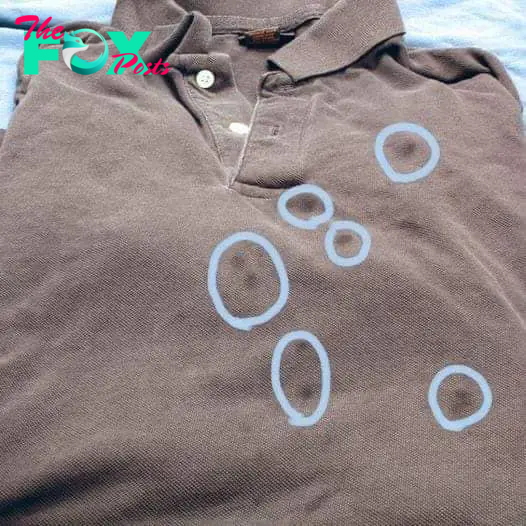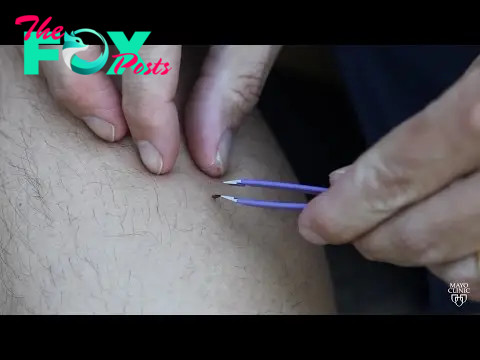Lifestyle
How to remove set-in grease stains from laundry
Grease stains are among the most stubborn to get rid of. Sometimes, if the piece of clothing that got greased isn’t the newest one or one of our favorite, we can just get rid of it by throwing it in the trash, but if we are attached to it, we’ll do everything to save it and wear it again and again.
One way to get rid of the grease stains, which is apparently a very practical one and makes wonders, is using Dawn Platinum Erasing Dish Foam.

And somehow it does make sense. If the dish foam cuts through grease, then what stops it from cutting through the grease left on a fabric?
Using it for this specific purpose is a straightforward process. You simply put it directly on the stain, leave it for around 5 minutes or more, and then wash it with your usual detergent. In case the grease is very stubborn, repeat the process more than once.
What’s best about this method is that it treats grease stains on various materials, including cotton, jeans, and polyester. It also works on old stains.

If you are to try this on delicate fabrics, do a patch test just to make sure the piece of clothing won’t get ruined.
This is an excellent trick that can save you time when doing the laundry, especially if that’s an activity you are not fond of.
Please SHARE this article with your family and friends on Facebook.

If you find a tick inside your home, here’s what you need to know
Nature is the home to an incredibly versatile array of species, but ticks are definitely one of those that we tend to avoid at all costs.
These tiny arachnids, that are related to spiders, mites, and scorpions, are in fact parasites that survive by attaching themselves to larger Animals and feeding on their blood. Humans aren’t spared either. Sadly, these insects carry harmful bacteria that can spread disease to people.
Sadly, tick-borne diseases are at an all-time high, with about 50,000 cases reported each year, and far more going unreported.

There are different types of ticks, and unfortunately, they sometimes find their way to people’s homes. The types most commonly found in homes are the black-legged tick, the dog tick, and the brown dog tick.
- Black-legged Ticks – known as deer ticks, these ticks are typically brown or black in color and have a flattened, oval-shaped body. They are commonly found in wooded areas and can transmit Lyme disease.
- Dog Ticks are larger and can range in color from brown to reddish-brown. They have a tough, shield-shaped body. Dog ticks can transmit diseases such as Rocky Mountain spotted fever.
- Brown Dog Ticks are brown in color and have a slender body.
Although the tick season is between March and October, or sometimes longer, we should be wary of this insects all year round. In fact,if beaten by a tick, a person can develop symptoms even after two or three months.

The bite itself isn’t painful and can cause swelling, itchiness, blistering, and bruising. The bad thing is that ticks also carry and transmit severe diseases, most commonly Lyme disease, as well as Rocky Mountain spotted fever, ehrlichiosis, and babesiosis.
Initially, Lyme disease develops as a circular red ‘bull’s eye’ rash around the site of a tick bite. However, not everyone gets a rash and you should also watch out for a flu-like illness with fever, headache, tiredness and general aches and pains.
The best way to prevent being bitten by a tick is to avoid tall grasses and areas where ticks thrive (such as moorlands and woodlands), especially during the warmer months.
In case you do get bitten, you should remove the tick as soon as possible in order to prevent infections.

These are some of the ways of safe removal.
- Use fine-tipped tweezers: Use clean, fine-tipped tweezers to grasp the tick as close to the skin as possible.
- Pull gently: Apply steady upward pressure, being careful not to squeeze or crush the tick. Aim to remove the tick in one smooth motion without twisting or jerking. Twisting or jerking can cause the tick’s head to break off and stay inside the skin, where it can still transmit disease.
- Clean the area: After removing the tick, clean the affected area with soap and water or an antiseptic solution. Monitor the site of the bite for any signs of infection or a rash, and consult a healthcare professional if necessary.

If by any chance ticks find their way into your home, take immediate action in order to prevent infestation. Most times, ticks are brought into your home in case they stick on your clothes or onto your pets.
- Isolate the area: If you have identified the presence of ticks in a specific area, keep pets and children away from that space.
- Wear protective gear: Put on gloves and a long-sleeved shirt to protect yourself from potential tick bites.
- Clean the area: Clean the area where you found the tick. If it is in bedding, wash the sheets. Inspect the area to ensure there are no more ticks that are present. Dispose of the tick by either flushing it down the toilet or sealing it in a container or ziplock bag before placing it in the trash.
-

 Lifestyle31m ago
Lifestyle31m ago‘A.I. God’ by Ai-Da Makes History as First Artwork by Humanoid Robot to be Sold at Auction
-

 Lifestyle45m ago
Lifestyle45m ago“No Wonder”: Nimrat Kaur speaks out about dating rumors with Abhishek Bachchan, amid divorce rumors with Aishwarya Rai Bachchan, viral statement “I can do anything to…see more.ngocchau
-

 Lifestyle2h ago
Lifestyle2h agoA hero for the common man | The Express Tribune
-

 Lifestyle2h ago
Lifestyle2h agoOur tax dollars should be funding care not killing' | The Express Tribune
-

 Lifestyle5h ago
Lifestyle5h agoBREAKING: One Direction stars gather at former member Liam Paynes funeral, and a surprise meeting between Kate Cassidy and Cheryl Cole sparks see more.cau
-

 Lifestyle5h ago
Lifestyle5h agoBREAKING NEWS: Keanu Reeves Refuses to Present Whoopi Goldbergs Lifetime Achievement Award: Shes Not a Good Person Full story.cau
-

 Lifestyle7h ago
Lifestyle7h agoOne Direction stars mourn as Liam Payne laid to rest | The Express Tribune
-

 Lifestyle7h ago
Lifestyle7h agoMescal hails Ronan's callout on women's safety | The Express Tribune





















